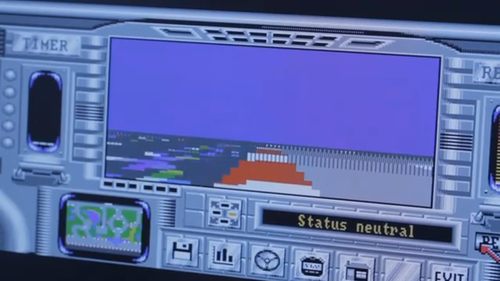At the beginning of the week, Matt Brown linked to a website featuring the work of Gerd Arntz and pointed out that many of the iconic shapes you see there were drawn around 85 years ago. Coincidentally, there is a small Isotype exhibition running at the V&A in London, until the 13th of March.
Alex found a video which explains the thinking behind the face of Watson, the Jeopardy-winning IBM supercomputer. The concept of a spacial arrangement of colours to convey emotions is reminiscent of the Drones in Ian M. Banks’ Culture novels.
Lastly, a bit of nostalgia. One of my most vivid memories of the Amiga era was formed by a game called Drive IFF, which arrived on the front of Amiga Format magazine in June 1991. Ostensibly a racing game, it owed more to the concept of the game grid from the original Tron movie than it did to games like Outrun.

To race, you need a track, and the developer’s brilliant idea was to dramatically simplify the entire design and rendering process. The racetrack is designed in plan view, and the resulting image is mapped onto the floor of a vast plain. The SNES featured a similar technique in Super Mario Kart, a year or so later.
The game didn’t enforce any boundaries, so when you reached the edge of the racetrack image loaded into a specific area of your computer’s memory, you simply carried on into the unknown. I was less interested in the gameplay, but was fascinated by the concept of this game as a window into the computer’s unconcious. In fact, the game was so unbounded it was possible to drive far enough into the unconscious space to crash the entire computer. We grabbed a short video of it in action, running in an emulator.
Roads? Where we’re going we don’t need roads.